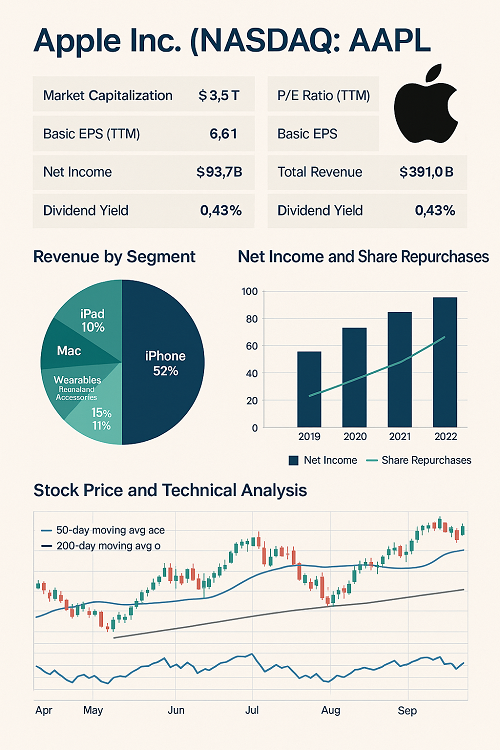BlackBerry Limited (TSX: BB), often referred to as BB stock on the TSX, is one of the most dynamic turnaround stories in the Canadian tech space: once famed for mobile handsets, now pivoted into cybersecurity, Internet of Things (IoT) and licensing. While the legacy business is largely behind it, the company’s new focus has potential—though also significant execution risks. From a trading standpoint, BB presents both opportunity and volatility: the fundamentals are mixed, technicals show key setups, and the market remains indecisive. This article offers a full view: from historical context to forward scenarios, to help both traders and investors form a clearer hypothesis.
Company Snapshot & History
Founded in 1984 and headquartered in Waterloo, Ontario, BlackBerry originally made its name via secure mobile communications. Over time the smartphone era shifted and BlackBerry transformed. Today its segments are:
- Cybersecurity (including brands such as Cylance, BlackBerry Spark, AtHoc, SecuSUITE)
- IoT (software licensing, support, professional services)
- Licensing & Other (intellectual property licensing, settlement awards)
BlackBerry trades on the Toronto Stock Exchange under ticker “BB” and also has U.S. listings (though this write-up focuses on TSX: BB).
Key recent statistic: annual revenue for the latest year came in at ~ CAD 765.31 million, with ~ CAD 377.4 million coming from its “Secure Communications” segment.
Business Model & Growth Drivers
1.Transition from Hardware to Software
The move from handset-maker to enterprise software/security was fundamentally strategic. While legacy hardware revenues have dramatically declined, the upside lies in higher margins and recurring revenue from software/licensing.
2. Cybersecurity Tailwinds
Cybersecurity remains a fast-growing sector as threats proliferate globally. BlackBerry’s acquisition of Cylance gives it advanced end-point protection capabilities and AI/ML-driven security. This positions the company to benefit from increasing enterprise spend in security.
3. IoT & Automotive Play
In IoT, BlackBerry’s QNX OS (not explicitly detailed in the financials here) remains embedded in automotive systems and mission-critical devices. As vehicles become more connected, the licensing/firmware business may provide a more stable revenue stream.
4. Licensing & Intellectual Property Monetisation
The licensing and “Other” segment — often overlooked — provides a hedge: BlackBerry monetises its remaining IP legacy, which adds a unique revenue component not common to many peers.
5. International Expansion Potential
While North America remains the largest region (e.g., CAD 344.3 million revenue last year from North America) , growth in Europe and Asia may offer upside if BlackBerry can scale its enterprise security platform.
Financial Health: Metrics & Trends
Revenue & Income
- Revenue ~ CAD 765.31 M in the most recent year.
- The company still reports net losses (e.g., net income shown at −CAD 123.49 M in one dataset)
This implies they are still in transitional mode: growth in new segments, but profitability is a work in progress.
Margins & Efficiency
From publicly-available statistics: Price-to-Sales ratio about 5.23, Enterprise-Value to EBITDA around 44.21 at one point. These are relatively elevated multiples to expect meaningful return.
Dividends / Shareholder Returns
BlackBerry currently pays no dividend. For income-oriented investors, this may be a drawback.
Forecasts & Analyst Sentiment
Analyst 1-year price target is in the ballpark of CAD 6.70-7.00 (for TSX:BB) according to data. However, ratings are largely Neutral, reflecting the uncertainty in execution.
Technicals & Trading Metrics
On the technical front, the platform shows mixed signals: for example, on a weekly horizon it shows “Sell,” while on moving-averages maybe “Strong Sell.” For traders, this signals caution and the need for confirmation rather than a sure bullish move.
Market Position & Competitive Landscape
Cybersecurity Space
BlackBerry competes with larger enterprise security firms (e.g., CrowdStrike, Palo Alto, Fortinet) and emerging challengers. In this arena, market leadership, threat detection tech, and enterprise trust matter greatly.
IoT and Embedded Systems
In automotive/embedded systems, QNX continues to be a recognized OS. However, competition from Android/Automotive OS, Microsoft, Tesla’s internal stack, etc. is fierce.
Legacy and Brand Perception
While BlackBerry’s brand still holds recognition, the “phone maker” association may hinder enterprise customers who prefer purely enterprise-centric vendors. That said, the pivot has been executed with relative clarity, which is a plus.
Strengths vs Weaknesses
Strengths: Niche in secure communications, embedded software presence, diversified licensing revenue.
Weaknesses: Small scale vs major peers, margin still under pressure, negative net income, investor sentiment cautious.
Technical Analysis & Trading Outlook
For traders looking at TSX: BB, here are key technical insights:
- Watch the major moving averages (50-day, 200-day) for crossover signals — these often act as drivers of momentum.
- Volume should pick up on breakout above prior resistance (e.g., CAD 7.00 area) to validate upward move.
- On the downside, key support zones may lie around recent lows (e.g., CAD ~5.00-5.50) — if broken, stop-loss discipline is critical.
- The ratio of oscillators (RSI, MACD) currently shows neutral to slightly bearish bias per the TradingView technicals.
- Given the mixed fundamentals, trading BB may be more favourable as a swing-trader or episodic momentum trade rather than a long-term buy-and-forget.
Risks & Key Challenges
- Execution Risk: The shift from hardware to software is complex; missing product/service delivery targets will hurt credibility.
- Competitive Pressure: Larger players with deeper resources could squeeze margins or take key clients.
- Profitability: Continued losses raise questions of path to positive free cash flow and sustainable margins.
- Macro / Sector Risk: Tech spending cycles and cybersecurity investments can be volatile depending on global economic and geopolitical factors.
- Valuation Risk: With elevated multiples required for meaningful upside, any disappointment could trigger outsized downside.
- Liquidity & Trading Risk: Lower trading volumes relative to large-cap stocks may inflate volatility and widen spreads.
Valuation & Price Target Scenarios
Here are three potential scenarios for TSX: BB over the next 12-18 months:
- Base Case: Execution holds, cybersecurity/IoT segments grow modestly, revenue rises ~10-15%. Stock trades at current multiple (~5x sales) ⇒ price target ~CAD 7.00-8.00. (Aligns with analyst range)
- Bull Case: Major contract wins, rapid margin expansion, perhaps an M&A or strategic partnerships accelerate growth → multiple expands to ~7-8× sales ⇒ target CAD 9.00-12.00.
- Bear Case: Execution stumbles, macro slows, losses widen → valuation multiple compresses to ~3-4× sales or worse ⇒ target CAD 4.00-5.00 or lower.
For traders, risk/reward would need to be carefully considered — entry below support levels with tight stop-loss and defined upside can be a reasonable approach.
Strategy for Traders & Investors
For Investors (3-5 year horizon):
- Wait for evidence of consistent positive cash flow and margin expansion.
- Monitor revenue growth in cybersecurity + IoT — if growth flattens, pause further investment.
- Consider position sizing due to the higher risk profile.
For Traders (weeks to months horizon):
- Consider swing trade setups: breakout above resistance (CAD 7 region) or bounce from support (CAD 5 region) with volume confirmation.
- Use technicals as guide: for example RSI divergence, MACD cross, volume spikes.
- Have clearly defined stop-loss points (e.g., below recent low) and profit targets (e.g., short-term CAD 8).
- Given no dividend and mixed fundamentals, trading rather than long-holding may be more appropriate unless investor has high conviction.
Conclusion & Key Take-aways
- BlackBerry is a transformation story: from phone-maker to enterprise security/IoT/licensing.
- The upside exists, especially if growth accelerates in cybersecurity and IoT, but the risk is meaningful.
- Valuation implies the market expects meaningful improvement — if that doesn’t materialize, disappointment risk is real.
- From a trading perspective, BB offers interesting setups but requires discipline and good risk management.
- From an investment horizon perspective, waiting for consistent profitability and margin expansion may de-risk the play.
- In sum: BB is a watch-and-trade stock rather than a buy-and-hold at current conditions — unless you are comfortable with higher risk for higher potential return.





 XAUT-USD
XAUT-USD  AMD
AMD  MARA
MARA  SHOP
SHOP  BULL
BULL  CL=F
CL=F